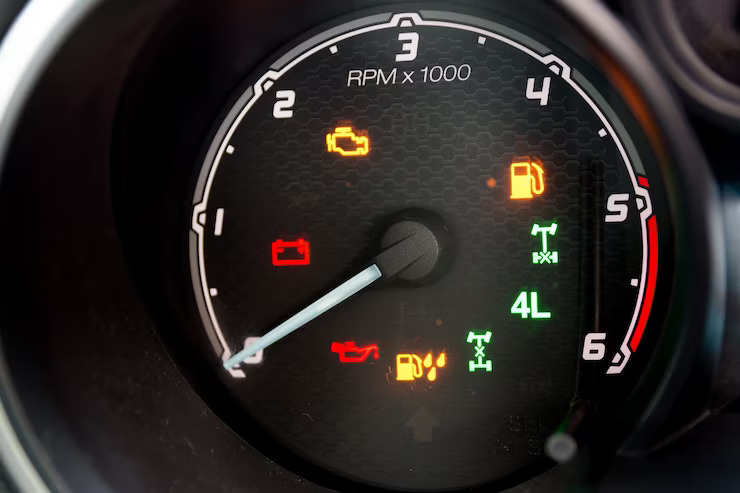Modern vehicles are equipped with advanced suspension systems that enhance comfort, stability, and handling. One such innovation is adaptable suspension, which adjusts the suspension settings based on road conditions and driving dynamics. However, like any sophisticated system, adaptable suspensions can sometimes encounter issues that trigger warning lights on the dashboard. In this article, we will explore the common causes of adaptable suspension warning lights and provide troubleshooting steps to address them effectively.
- Suspension System Overview: Adaptable suspensions utilize sensors and electronic control modules to continuously monitor and adjust the suspension settings. They can adapt to changes in road conditions, vehicle speed, and driver input to optimize ride quality and handling performance. When a fault is detected in the system, a warning light illuminates on the dashboard to alert the driver.
- Common Causes of Adaptable Suspension Warning Lights: a. Sensor Malfunction: The suspension system relies on various sensors to gather data on road conditions and vehicle dynamics. If a sensor fails or provides inaccurate readings, it can trigger a warning light. b. Faulty Control Module: The control module processes the sensor data and adjusts the suspension settings accordingly. A malfunctioning control module can cause the warning light to activate. c. Electrical Issues: Wiring problems, loose connections, or blown fuses can disrupt the communication between the sensors, control module, and the suspension components, leading to warning light activation. d. Mechanical Failure: Issues with the suspension components, such as worn-out shock absorbers, damaged air springs, or leaks in hydraulic systems, can trigger the warning light.
- Troubleshooting Steps: When an adaptable suspension warning light illuminates, it is essential to address the issue promptly to restore the proper functioning of the system. Here are some troubleshooting steps to consider:
a. Check for Obvious Issues: Start by visually inspecting the suspension components for any visible damage, leaks, or loose connections. Ensure that the suspension height is within the normal range.
b. Restart the Vehicle: Sometimes, the warning light may activate due to a temporary glitch. Turn off the engine, wait for a minute or two, and then restart the vehicle. If the warning light remains on, proceed to the next steps.
c. Scan for Error Codes: Use an onboard diagnostic (OBD) scanner to retrieve error codes from the vehicle’s electronic control unit (ECU). The error codes will provide valuable information about the specific issue affecting the adaptable suspension system. Consult the vehicle’s manual or seek professional assistance to interpret the error codes accurately.
d. Check the Sensors: Inspect the sensors associated with the adaptable suspension system. Ensure that they are clean, free from debris, and securely mounted. If a sensor appears damaged or malfunctioning, it may require replacement.
e. Inspect Electrical Connections: Examine the wiring harnesses, connectors, and terminals related to the suspension system. Look for loose connections, corrosion, or damaged wires. Repair or replace any faulty components as necessary.
f. Test the Control Module: The control module plays a crucial role in interpreting sensor data and adjusting the suspension settings. If other troubleshooting steps do not resolve the issue, it may be necessary to test or replace the control module. This task is best performed by a qualified technician.
g. Seek Professional Assistance: If the above steps do not resolve the problem, it is recommended to consult a reputable mechanic or dealership with expertise in your vehicle’s adaptable suspension system. They have specialized diagnostic equipment and knowledge to diagnose and repair complex suspension issues effectively.
- Preventive Maintenance: To minimize the chances of adaptable suspension warning lights and maintain the system’s longevity, consider the following preventive maintenance measures:
a. Regular Inspections: Schedule periodic inspections of the suspension system by a qualified professional. They can identify and address potential issues before they become major problems.
b. Follow Manufacturer Guidelines: Adhere to the manufacturer’s recommended maintenance schedule for your vehicle. This includes services such as fluid changes, inspections, and component replacements.
c. Drive Responsibly: Avoid rough driving, excessive speed, and aggressive maneuvers that can put excessive strain on the suspension system.
d. Be Mindful of Road Conditions: Adapt your driving style when encountering rough or uneven surfaces to minimize stress on the suspension components.
Adaptable suspension warning lights indicate potential issues with the suspension system. By following the troubleshooting steps outlined above and practicing preventive maintenance, you can effectively address these issues and ensure the optimal performance of your vehicle’s adaptable suspension system. Remember, when in doubt, it is always best to consult a professional to diagnose and resolve complex suspension problems.











